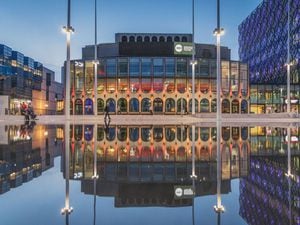Historic Wolverhampton theatre’s home to get refurbishment
Essential refurbishment work is to be carried out at an historic Wolverhampton college building that houses a theatre dating back to the 1860s.

Tettenhall Towers, at Tettenhall College, has been granted Listed Building Consent to upgrade its theatre reception area and adjoining toilets, following an application to city council planning chiefs.
The Grade II* listed building in Wood Road, which dates back to around 1770, contains an auditorium that has been noted by the UK’s Theatres Trust for its “unique architectural and historic interest”.
In a statement accompanying the planning application, Bruce Jones, of Wolverhampton-based DPS Architects Limited, said: “The building has suffered from decades of electrical upgrades, panelling to sash windows and substantial amounts of retro-fitted plumbing pipework. The current facilities are poor and in need of an upgrade.”
A letter to Wolverhampton Council planners from Tom Clarke, National Planning Adviser for the Theatres Trust, added: "The theatre, within Tettenhall Towers which is now part of Tettenhall College, is a statutory Grade II* listed heritage asset.
"It is the home of the Secga Theatre Company which is a local amateur theatre group.
Cultural facility
"It is also used by other local groups such as Tettenhall Operatic Company as well as for public performances of student shows.
"As such, alongside its educational function within the college, it provides an important role as a community and cultural facility for local people.
"The theatre has unique architectural and historic interest, having been designed around 1860 as the ‘Great Music Room’ of Tettenhall Towers.
"It was the home of Colonel Thomas Thorneycroft, who was a scientist, engineer, ironmaster and ‘public-spirited’ capitalist.
"It was intended for public use and purpose-built for concerts, readings, theatre, lectures and public meetings in the absence of such a facility within the nearby village.
"Originally it was flat-floored, with a stage fitted up for more ‘ambitious theatricals’.
"It was further adapted around the 1880s for use as a permanent theatre, with a proscenium and generously-sized stage with lighting effects.
"The Trust’s database notes this theatre is ‘a fragile’ survivor of this kind of theatre and any works would ‘need to be undertaken with considerable skill and understanding’,” states the letter.
"There would be demonstrable enhancement of the external appearance of the building as currently blocked up bottom sashes to windows currently covered with plywood would be exposed.
"Therefore, we welcome these works and would be supportive of the granting of listed building consent."





